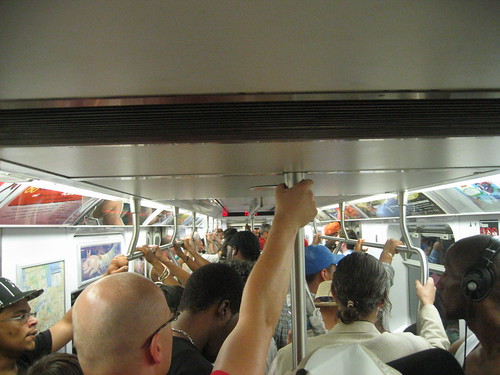 As we take our rides on the subway these days, advertising is just another part of our daily commute. Ubiquitous subway ads have always been there and seemingly will always be there. Now, as one MTA Board member is looking for creative ways to draw in revenue without raising fares, subway advertising has been thrust into the spotlight.
As we take our rides on the subway these days, advertising is just another part of our daily commute. Ubiquitous subway ads have always been there and seemingly will always be there. Now, as one MTA Board member is looking for creative ways to draw in revenue without raising fares, subway advertising has been thrust into the spotlight.
First, a history lesson.

 Update: As expected, the MTA’s
Update: As expected, the MTA’s  As we await news of the fare hike, let’s instead check in with some technology problems plaguing New York City Transit. Both concern flooding in the system; one’s about the water and the other, people.
As we await news of the fare hike, let’s instead check in with some technology problems plaguing New York City Transit. Both concern flooding in the system; one’s about the water and the other, people.
 When speaking about the best subway line in the city, it’s all relative. Which line arrives generally on time, is fairly clean and features mostly audible announcements?
When speaking about the best subway line in the city, it’s all relative. Which line arrives generally on time, is fairly clean and features mostly audible announcements?
 What a week, huh?
What a week, huh? At 1:50 p.m. yesterday, the MTA breathed a sigh of relief. For now, it seems, there is a flicker of hope for the financial future of the city’s transportation authority. This relief came in the form of four words from State Senate Majority Leader Joseph Bruno: “We have a deal.”
At 1:50 p.m. yesterday, the MTA breathed a sigh of relief. For now, it seems, there is a flicker of hope for the financial future of the city’s transportation authority. This relief came in the form of four words from State Senate Majority Leader Joseph Bruno: “We have a deal.”